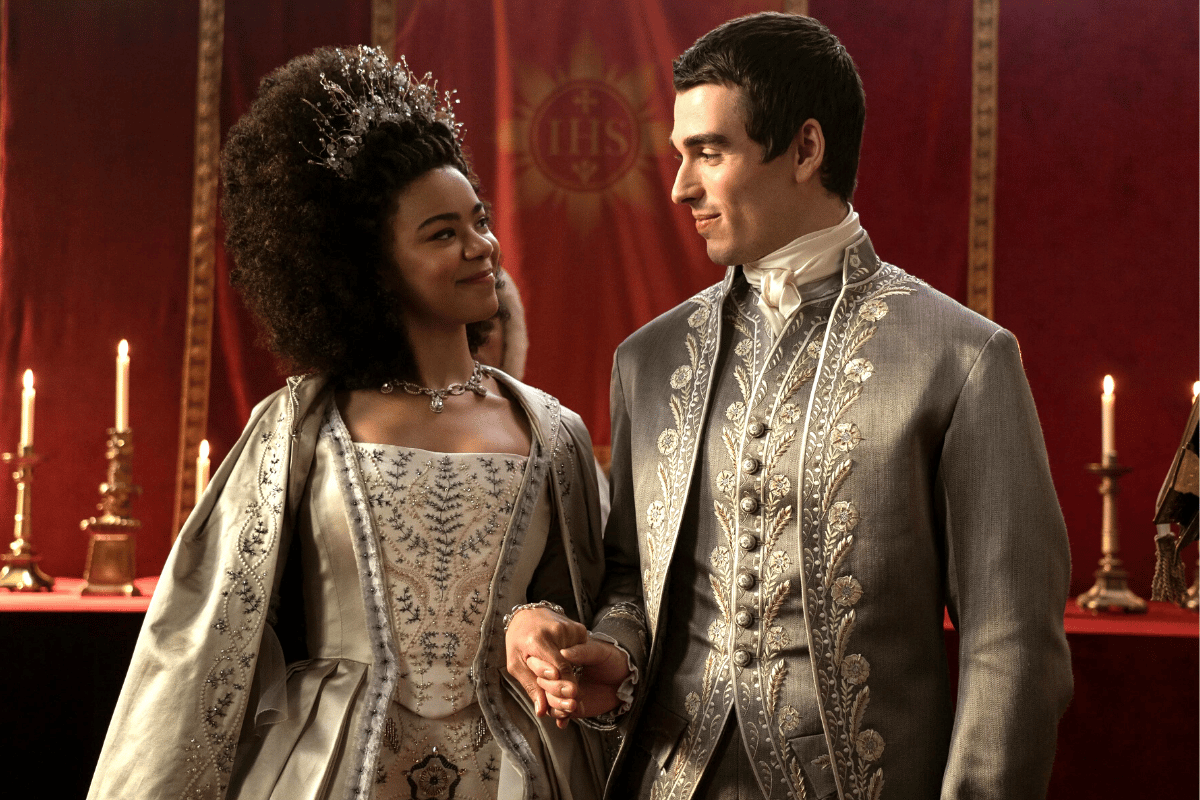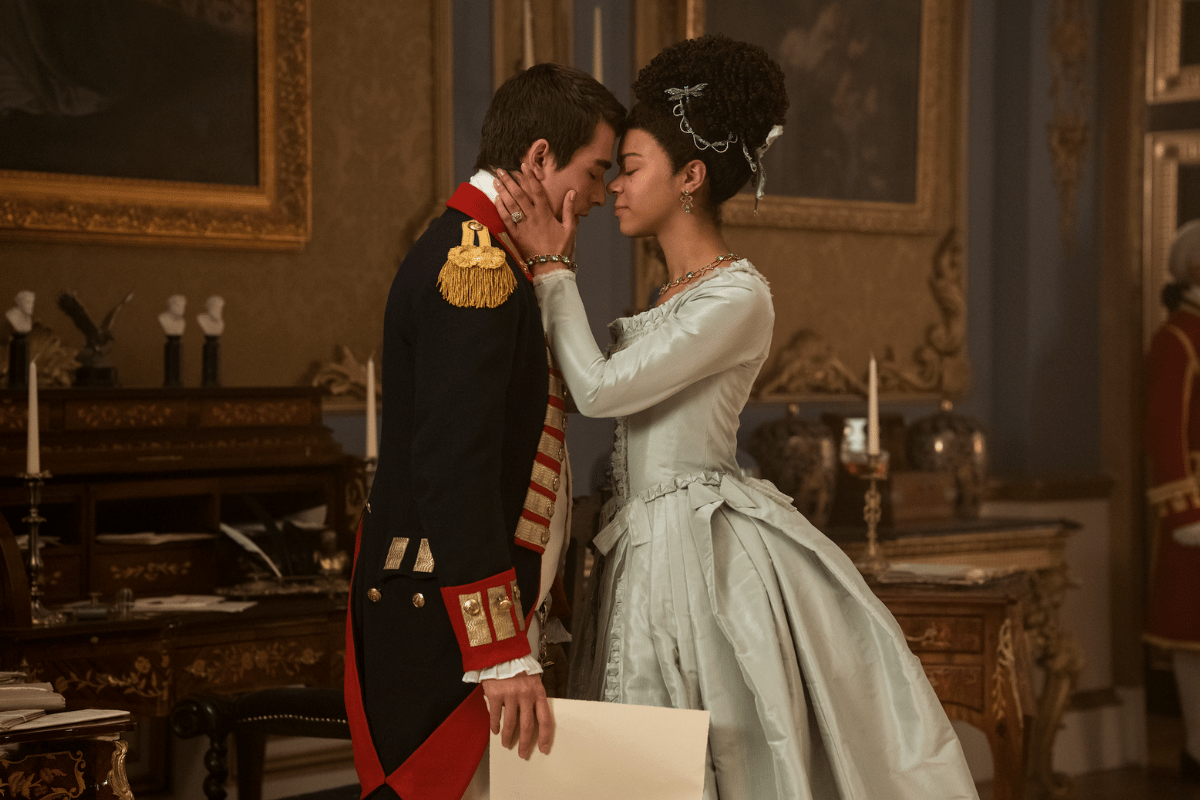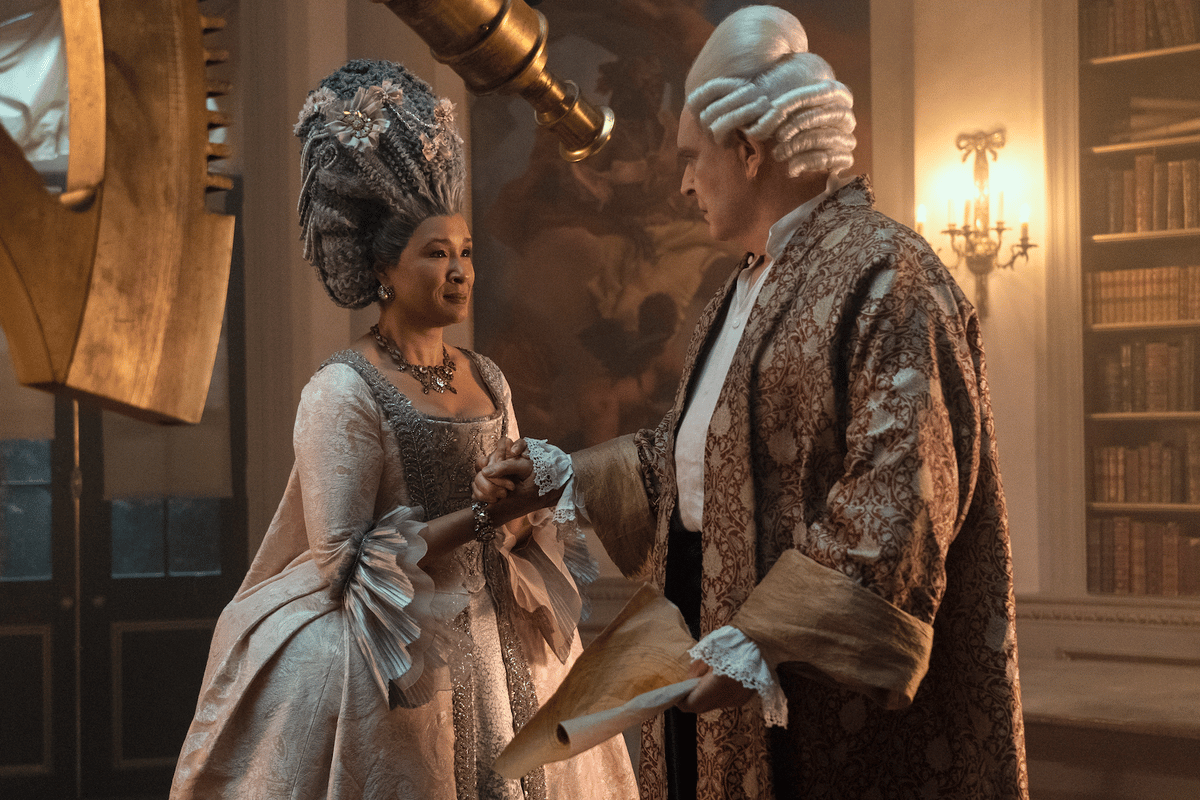
Warning: spoilers can be found in this article for Queen Charlotte: A Bridgerton Story. You've been warned!
Queen Charlotte: A Bridgerton Story is here – and you best believe I watched the whole season in one hit as soon as it was available.
So far in the Bridgerton universe, we've seen one woman make her debut into Regency London's competitive marriage market, a couple wrestle with their not-perfect-on-paper feelings for one another, a scandalous gossip column that wreaks havoc on high society, some kick-arse female characters, and the smooth pipes of Julie Andrews narrating.
Need I go on?
Whenever the news of a prequel arises, the reception is usually quite blasé.
But Queen Charlotte hits different. It's a little darker. There's strong chemistry. And it has a storyline that sometimes leaves you with a lump in your throat.
Watch the trailer for Queen Charlotte: A Bridgerton Story. Post continues below.
The first introduction to King George III (played by Corey Mylchreest) and Queen Charlotte (played by India Amarteifio) is idyllically Bridgerton-esque. There's some sassy banter when Charlotte initially tries to hightail over a palace wall in a poofy Regency-era dress to avoid an arranged marriage to George.



Top Comments